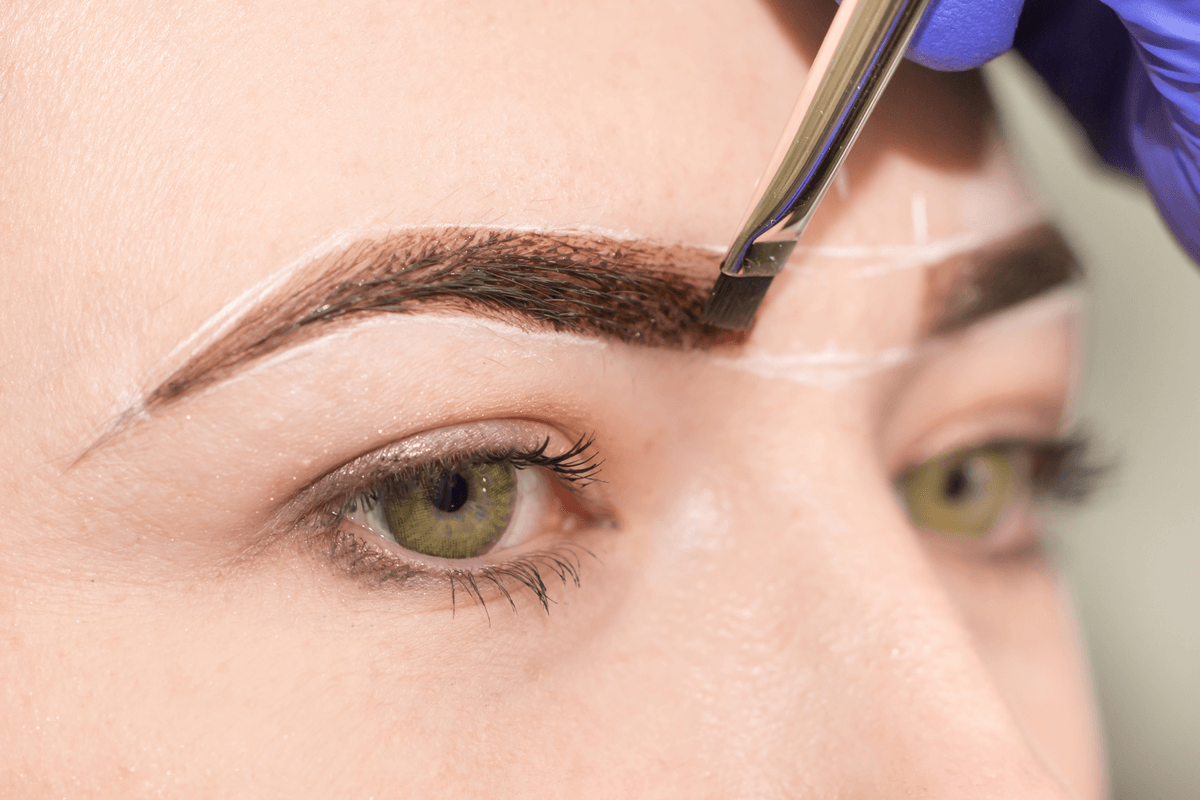What Are the Risks of Using Black Henna for Tattoos?


Reviewed and approved by the nurse Leidy Mora Molina
Have you heard about the risks of using black henna in temporary tattoos? Nowadays, this is a very popular fashion, which increases in the summer season when the skin is more exposed.
This pigment is obtained from a shrub. If it’s applied naturally, the color of the tattoo can be opaque, with a coppery or brownish tone, which is less striking. However, when chemicals are added, such as paraphenylenediamine, the ink darkens, making the result more eye-catching.
However, at the same time, it can cause various reactions, compromising health.
What is henna, and what is it used for?
Henna, or natural henna (as we can call it to differentiate it from the product derived from additives), is a pigment. It is extracted from the Lawsonia inermis plant. In Spanish, it’s known as alheña, arjeña, or jena.
This is a shrub native to the subtropical regions of Africa and western Asia, although it’s widespread in other areas. It reaches 2 to 3 meters in height. It has small flowers and fruits that are like blackberries.
The health benefits of Lawsonia inermis are diverse. It has been reported to contain flavonoids, tannins, and phenolic compounds. In addition, it works as an astringent, antiseptic, and has antimicrobial properties.
In this sense, it’s used for the treatment of gastrointestinal ulcers, as an antidiarrheal, and antiurolithiasis. It’s even applied on eczema and open wounds, as well as to soothe dysmenorrhea.
Moreover, a dye can be extracted from the dried and macerated leaves of this plant, which is used to dye fabrics or hair. Its use on the skin for temporary tattoos began to become popular in India.

We think you may also enjoy reading this article: 7 Ways to Use Rose Petals in Your Beauty Routine
Paraphenylenediamine and black henna
The pigment in natural henna has a reddish or coppery brown tone that’s sometimes greenish. Therefore, it’s not as showy or eye-catching when applied. It only remains for 3 to 4 days. However, this is the way it was used in ritual ceremonies in Islamic countries or in India.
However, in the West, it has been modified by incorporating some additives to darken the pigment, making it more intense and long-lasting. In short, when the resulting product (black henna) is applied, the effect is more like a permanent tattoo.
And this is where the problems begin. In black henna, the main additive used to reinforce the color is paraphenylenediamine, also known as p-phenylenediamine, 1,4-diaminobenzene, or simply PPD.
This is a chemical that can be found in a variety of everyday products:
- Clothing dyes
- Eye shadow and mascara
- India ink, printer, and fax ink
- Rubber bands and tires
- Bicycle or tool handles
- Diving goggles
- Neoprene suits
Countries such as Germany and France have banned its use in cosmetics. Also, in Spain, according to Directive 76/768/EEC, the concentration of diaminobenzene is limited to a maximum of 6% in hair dyes and has other restrictions.
Bearing this in mind, it’s worth noting that, in some cases, the proportion of PPD in black henna used as tattoo ink can reach 15%, but the maximum allowed for skin uses is 2%.
Like this article? You may also like to read: 7 Beauty and Makeup Myths that Are Actually True
The risks of black henna
Henna is a natural substance, and its use is considered low-risk. The problem is paraphenylenediamine. But what exactly is wrong with this compound, and why should we be careful about using it?
According to studies, a variety of side effects can result from skin contact with PPD, including severe allergic skin reactions. This can occur even with a single exposure.
Possible side effects include the following:
- Itching, burning sensation, redness, or inflammation
- The appearance of vesicles and blisters
- Allergic contact eczema
- Areas with hypo- or hyperpigmentation
- Respiratory or renal failure (when cross-reactions occur)
In particular, such cross-reactions with PPD can occur with photoprotection and with local anesthetics, as well as in people taking certain medication (sulfonamides, antimicrobials, hypoglycemic, and antihistamines).
Sensitization can also take place, so that upon subsequent contact with the compound (e.g., on clothing), reactions could be more severe. Finally, PPD is considered dangerous for people with G6PD (glucose-6-phosphate dehydrogenase) deficiency, in whom it produces hemolytic anemia.
Tattoos with natural henna
It’s often believed that this type of decoration doesn’t have the complications of conventional tattoos. Many people simply assume it’s like makeup.
In fact, even adults allow children to have temporary tattoos. This is why the AEMPS has issued a caution regarding such risks of tattooing with black henna.
It’s a good idea to remember that it is the chemical additions that cause reactions. Therefore, if you’re going to get a temporary tattoo, make sure it’s with natural henna. To make sure of this, you should ask the artist who does the work.
You can also check that it’s not black henna by looking at the color of the powder. As mentioned, the natural product has a shade between brown, reddish or coppery; if it’s very dark or black, there’s no doubt that it has additives.
Once the tattoo has been done, you will also notice other differences. For example, the drying process with black henna is fast. In addition, the effect lasts for several weeks.

When to see a doctor for negative reactions to black henna
After you get a temporary tattoo with black henna, the first signs that indicate a possible allergic reaction include itching, burning, redness, and swelling.
If you have any of these symptoms, a visit to a dermatologist is necessary. He or she will make the diagnosis and determine if it’s contact dermatitis due to a reaction to PPD.
For treatment, antihistamines and corticosteroids may be recommended. These help to reduce the symptoms. However, it is possible that some sequelae may remain in the form of permanent scars or keloids in certain cases.
All cited sources were thoroughly reviewed by our team to ensure their quality, reliability, currency, and validity. The bibliography of this article was considered reliable and of academic or scientific accuracy.
- Agencia Española de Medicamentos y Productos Sanitarios (AEMPS). Riesgos de los tatuajes temporales a base de henna negra. 2015; documento en línea. URL disponible en: https://www.aemps.gob.es/cosmeticosHigiene/cosmeticos/docs/Riesgos_de__la_Henna_negra.pdf.
- Chaudhary G, Goyal S, Poonia P. Lawsonia inermis Linnaeus: A Phytopharmacological Review. International Journal of Pharmaceutical Sciences and Drug Research. 2010; 2(2): 91-98.
- Dinesh P, Subhasree R. Antimicrobial Activities of Lawsonia inermis – A Review. Academic Journal of Plant Sciences. 2009: 2(4): 231-232., Department of Biotechnology, BIT Campus Anna University, Trichirapalli-620024 2.
- Directiva 76/768/CEE del Consejo, de 27 de julio de 1976, relativa a la aproximación de las legislaciones de los Estados Miembros en materia de productos cosméticos. Diario Oficial n° L 262 de 27/09/1976 p. 0169 – 0200.
- Hervella M, Durán G, Iglesias M, Ros C, Gallego M. Reasons to advise against temporary henna tattoos. Anales Sis San Navarra. 2005; 28(3): 403-407.
- Patel T, Golwala D, Kumar S. Evaluación de las actividades antiurolitiáticas potenciales de los extractos metanólicos de Lawsonia inermis. Aegaeum Journal. 2020; 8(4): 95-99.
- Pérez E, Pino R. Dermatitis alérgica por contacto al tatuaje de henna. Reporte de un caso y sus implicaciones clínicas. Arch Inv Mat Inf. 2011; 3(2): 77-80.
This text is provided for informational purposes only and does not replace consultation with a professional. If in doubt, consult your specialist.








